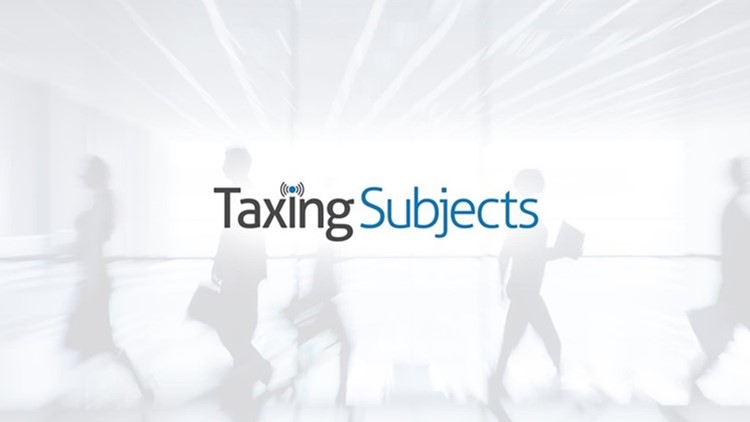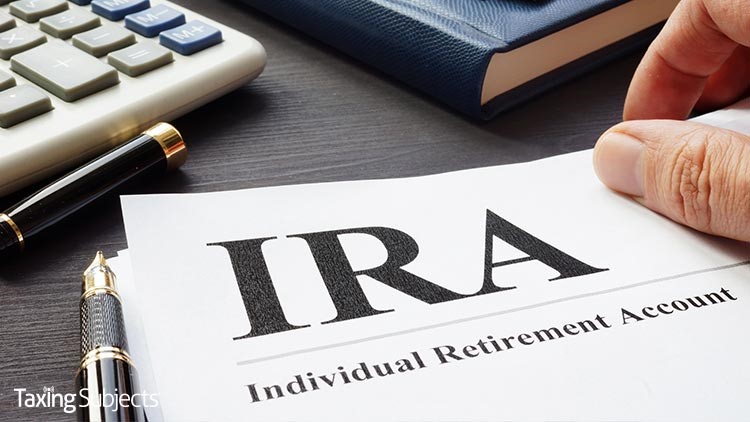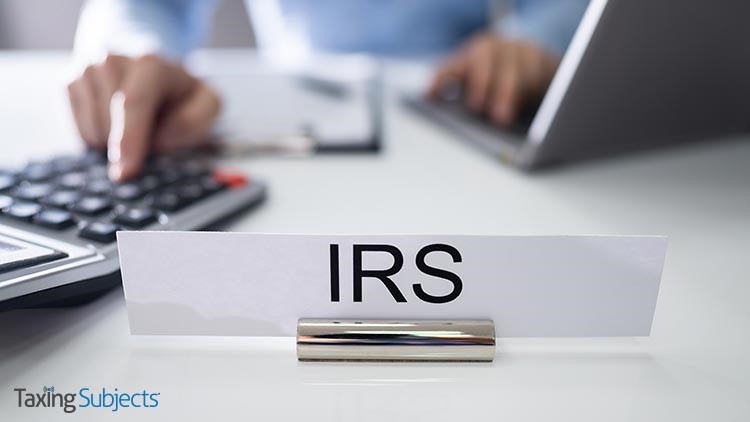by | Jun 29, 2020 | Tax Tips and News
A new report to Congress from one of the Internal Revenue Service’s advisory panels is calling for the government to do something unusual: Fully fund the IRS budget request.
The request comes from the Electronic Tax Administration Advisory Committee, or ETAAC, a panel comprised of tax industry leaders, IRS representatives and other specialists in the computing and tax fields.
ETAAC’s 95-page report puts forth four major building blocks to complete what it sees as the end goal: to improve taxpayer service and increase compliance. The panel sees the necessary steps to the goal as:
- Fund, modernize and enable the IRS;
- Defend and protect our tax system;
- Improve the taxpayer experience; and
- Strengthen the Security Summit and the Information Sharing & Analysis Center
The report breaks each of these tasks down to their component parts, revealing a comprehensive plan to improve the American income tax system.
ETAAC wants Congress to fund, modernize and enable the IRS.
First and foremost, the committee is calling for Congress to fully fund the IRS’ FY 2012 budget. “Congress should fully fund the IRS’s FY2021 budget request to enable the IRS to deliver 21st Century taxpayer experiences, narrow the $380 billion Tax Gap to meet the nation’s pressing fiscal needs, protect the tax system and build a modern information system infrastructure” the report states.
Appropriations should be allocated across the IRS’ four appropriations accounts to allow the agency to achieve its stated goals of taxpayer service, enforcement and modernization.
Other goals within this heading include granting the IRS request for an adjustment in the FY2021 Program Integrity Cap and enabling government-wide digital identity policies and initiatives.
Also included is a call to provide the IRS with the authority and necessary funds to enforce security standards. “Congress should grant the IRS the clear legal authority and provide the associated funding to issue and enforce appropriate information security standards and guidance in the area of tax administration, which could include adopting existing or establishing new administrative, technical and physical safeguards, implementing required education and training, and providing ongoing guidance,” the report says.
Defending and protecting the tax system from identity theft tax refund fraud is a priority.
One of the linchpins in the IRS fight against Identity Theft Tax Refund Fraud (IDTTRF) has been the Security Summit. The ETAAC sees further collaboration with the Security Summit to evaluate and develop responses to potential attacks on the tax system. In a similar vein, the report also calls for engagement with the Federal Trade Commission (FTC) to assess the impact and how best to implement proposed changes to FTC’s Safeguards Rule.
The goal here, the report states, is to “to educate and enable the tax preparation community to comply with any new security requirements without the significant and unnecessary disruption of this community’s ability to serve taxpayers.”
The report also calls for study of the tax preparer community to understand how it operates, determine the state of information security practices and vulnerabilities, and to identify high-level strategic options — and their costs. The study, ETAAC says, should be carried out by a qualified third party.
It’s time to improve the taxpayer experience.
The IRS should tap into experts outside the agency to identify and possibly pilot promising technologies, the report finds. Also on the drawing board: taxpayer-controlled “real-time” protective features for individual and business accounts; expanded collaboration on design and launch of the IRS 1099 internet-based service; and increased accuracy of the information surrounding the EIN responsible party.
How do we strengthen the Security Summit and ISAC?
The Taxpayer First Act (TFA) made a number of changes to the IRS a matter of law. However, ETAAC wants to ensure that the IRS’ coordination among advisory groups is maintained. It’s calling for an evaluation of TFA’s impact on the Security Summit while looking to sustain the Summit’s effectiveness as well as the energy and commitment of its participants.
Other recommendations include collaboration with state and industry members of the Information Sharing & Analysis Center (ISAC) to implement provisions of the TFA, improving the on-boarding process for new ISAC members while offering a more structured ISAC training program.
Lastly, the report calls for developing and implementing a system that enables electronic EFIN validation in real time for authorized third parties. Once this capability is launched and tested, ETAAC would like to see the same capability expanded to real-time PTIN validation.
What is an immediate concern for the tax industry?
While the report is positive about the effect its proposals would have on the American tax system, it reminds us that Identity Theft Tax Refund Fraud is still a very real threat, both at the federal and state levels.
“The wholesale theft of huge volumes of personal information has provided criminals and other bad actors with detailed and accurate taxpayer information. Our sophisticated adversaries can use this information to create and file returns that look nearly identical to those of the legitimate taxpayer. It would be great if there were a silver bullet to make it easy for the IRS to spot these fraudulent returns among the hundreds of millions of legitimate returns. Unfortunately, there is no silver bullet.”
– Story provided by TaxingSubjects.com
by | Jun 25, 2020 | Tax Tips and News
The Internal Revenue Service is giving tornado, thunderstorm and flooding victims in three states extra time to file their various tax returns and make tax payments.
Severe storms raked parts of Mississippi, Tennessee and South Carolina in April; those areas have designated as qualified for individual assistance by the Federal Emergency Management Agency (FEMA). Currently, this includes Clarke, Covington, Grenada, Jasper, Jefferson Davis, Jones, Lawrence, Panola and Walthall counties in Mississippi; Bradley and Hamilton counties in Tennessee; and Aiken, Barnwell, Berkeley, Colleton, Hampton, Marlboro, Oconee, Orangeburg and Pickens counties in South Carolina.
Taxpayers in these counties—and counties added later to the federal disaster declaration—will have until Oct. 15, 2020, to file their individual and business tax returns and to pay any tax due.
Taxpayers in areas added to the federal declaration later will automatically get the same filing and payment relief. The current list of eligible counties and towns is available on the disaster relief page on IRS.gov.
What are the terms of the disaster area tax relief?
The exact extent of the tax relief in this new package is laid out in an IRS release:
“The tax relief postpones various tax filing and payment deadlines that occurred starting on April 12. As a result, affected individuals and businesses will have until Oct. 15, 2020, to file returns and pay any taxes that were originally due during this period. This includes 2019 individual and business returns that, due to COVID-19, were due on July 15. Among other things, this also means that affected taxpayers will have until October 15 to make 2019 IRA contributions” the IRS continues.
The Oct. 15 deadline also applies to estimated tax payments for the first two quarters of 2020 that were due on July 15, and the third-quarter estimated tax payment normally due on September 15. It also includes the quarterly payroll and excise tax returns normally due on April 30 and July 31.
Do you need to apply for disaster area tax relief?
The IRS automatically provides such filing and payment relief to any taxpayer who has an address on file within the disaster area. Taxpayers don’t need to contact the agency to see if they qualify.
If a taxpayer in the disaster area gets a late-filing or late-payment penalty notice from the IRS that has an original or extended filing, payment or deposit due date that falls within the postponement period, relief is only a phone call away. The taxpayer can merely call the phone number in the written notice to have the penalty abated.
Sometimes a taxpayer may live outside the disaster area, but has records needed to meet a deadline inside the stricken area. If the deadline occurs during the postponement period, the IRS will work with the taxpayer to work out a solution. This include workers assisting relief activities and who are affiliated with a recognized government or philanthropic organization.
Individuals and businesses in a federally declared disaster area who suffered uninsured or unreimbursed disaster-related losses can choose to claim them on either the return for the year the loss occurred (in this case, the 2020 return normally filed next year), or the return for the prior year. This means that taxpayers can, if they choose, claim these losses on the 2019 return they are filling out this tax season.
Those taxpayers who qualify for relief but live outside the federally declared disaster area need to call the IRS at 866-562-5227 once normal operations resume. For more information on services currently available from the IRS, visit the IRS Operations and Services page at IRS.gov/coronavirus.
Any taxpayer claiming a loss due to these storms should write the appropriate FEMA declaration number on the return. these numbers are: 4536 for Mississippi; 4541 for Tennessee; and 4542 for South Carolina. For more details, check out Publication 547.
For general information about disaster recovery, visit disasterassistance.gov.
– Story provided by TaxingSubjects.com
by | Jun 24, 2020 | Tax Tips and News
The COVID-19 pandemic has forced millions of Americans to take extraordinary steps just to stay afloat financially. For those taxpayers who might want to take distributions against their retirement plans or even borrow against their plans, the IRS has announced new relief.
The relief measures are outlined in IRS Notice 2020-50, allowing expanded access to plan distributions and plan loans. The new guidance expands the categories of individuals who are eligible for these kinds of distributions and loans (termed “qualified individuals”).
It also provides guidance and examples on how qualified individuals will report the tax treatment of such distributions and loans on their federal income tax returns.
The CARES Act says qualified individuals may treat distributions up to $100,000 made from their eligible retirement plans (including IRAs) between January 1 and Dec. 30, 2020 as coronavirus-related.
What’s at stake?
A coronavirus-related distribution is not subject to the 10% additional tax that otherwise generally applies to distributions made before an individual reaches age 59 ½. In addition, a coronavirus-related distribution can be included in income in equal installments over a three-year period, and an individual has three years to repay a coronavirus-related distribution to a plan or IRA and undo the tax consequences of the distribution.
The CARES Act also allows plans to relax certain rules for qualified individuals when it comes to plan loan amounts and repayment terms. In particular, plans can suspend loan repayments that are due from March 27 through Dec. 31, 2020; in addition, the dollar limit on loans made between March 27 and Sept. 22, 2020 is raised from $50,000 to $100,000.
Notice 2020-50 expands the definition of who is a “qualified individual.” Factors such as reductions in pay, rescissions of job offers, and an individual’s delayed start dates are taken into account.
The adverse financial consequences to an individual that arise from the impact of the coronavirus on the individual’s spouse or household member are also considered.
Who is qualified?
As expanded under Notice 2020-50, a qualified individual is anyone who:
- is diagnosed, or whose spouse or dependent is diagnosed, with the virus SARS-CoV-2 or the coronavirus disease 2019 (collectively, “COVID-19”) by a test approved by the Centers for Disease Control and Prevention (including a test authorized under the Federal Food, Drug, and Cosmetic Act); or
- experiences adverse financial consequences as a result of the individual, the individual’s spouse, or a member of the individual’s household (that is, someone who shares the individual’s principal residence):
- being quarantined, being furloughed or laid off, or having work hours reduced due to COVID-19;
- being unable to work due to lack of childcare due to COVID-19;
- closing or reducing hours of a business that they own or operate due to COVID-19;
- having pay or self-employment income reduced due to COVID-19; or
- having a job offer rescinded or start date for a job delayed due to COVID-19.
The Notice specifies that employers can choose whether these new coronavirus-related rules are implemented. It also notes that qualified individuals can claim the tax benefits of coronavirus-related distribution rules even if their plan provisions aren’t changed.
The guidance provides that administrators can rely on an individual’s certification that he or she is a qualified individual (and provides a sample certification). However, an individual must actually be a qualified individual in order to get favorable tax treatment.
Notice 2020-50 further provides employers with a safe harbor procedure for implementing the suspension of loan repayments that are otherwise due through the end of 2020. The notice also mentions there may be other reasonable ways to administer these rules.
For more information about how the CARES Act rules for COVID-related distributions and loans from plans can apply, employers, financial institutions and individuals should refer to Notice 2020-50.
This tax relief and other information related to the effects of COVID-19 on federal income tax is available on the IRS Coronavirus Tax Relief pages on the IRS website.
– Story provided by TaxingSubjects.com
by | Jun 19, 2020 | Tax Tips and News
Update: A previous version of this blog said MeF would be down from 12:00 a.m. Eastern on Wednesday, June 16, 2020 until 10:30 a.m. Eastern on Sunday, June 21, 2020. The service will only be down on Sunday from 12:00 a.m. until 10:30 a.m. Eastern.
Tax professionals planning to use the IRS Modernized e-File (MeF) system this weekend to file a stack of returns for their clients may have to send them to the Internal Revenue Service at a different time. The IRS yesterday used one of its QuickAlerts to announce extended maintenance for the service.
“MeF Production and Assurance Testing System (ATS) environments will be unavailable due to maintenance from 12:01 a.m. Eastern through 10:30 a.m. Eastern on Sunday, June 21, 2020,” the IRS wrote. The agency then recommended that users “monitor the MeF Operational Status page for any future updates.”
The planned outage will affect many preparers who still have returns to file, since—as the “Modernized e-File (MeF) Program Overview” page on IRS.gov explains—this service “provides electronic filing and payment options for filers of Corporation, Employment Tax, Estates and Trusts, Excise Tax, Exempt Organization, Individual, and Partnership Tax Returns.”
Source: IRS QuickAlerts
– Story provided by TaxingSubjects.com
by | Jun 18, 2020 | Tax Tips and News
A new report from the Treasury Inspector General for Tax Administration (TIGTA) finds that a number of tax preparers are themselves classified as non-compliant, but in many cases, the Internal Revenue Service has not acted to recoup the outstanding tax due.
The audit report says paid tax preparers play a large positive role in the administration of the nation’s tax system, preparing some 60% of all tax returns filed. But there may be a dark side to that otherwise sunny statistic.
“When preparers cannot manage their own tax affairs, or worse, if they intentionally claim credits and deductions to which they are not entitled, they could undermine the tax administration system,” the report states.
What were the results of the audit?
As of November, 2018, the IRS’ Return Preparer Database showed more than 30,000 preparers described themselves as being tax noncompliant on their Preparer Taxpayer Identification Number (PTIN) application during tax years 2011 through 2018.
TIGTA analyzed the database, finding 10,495 tax preparers who prepared more than 2 million tax returns in Processing Year 2016, but didn’t file a tax return of their own to report income received.
The audit also identified the top 100 nonfiler tax preparers, based on the number of returns prepared for clients in Tax Year 2016 using PTIN information. These top 100 preparers filed approximately 1,000 to 6,000 tax returns for clients in Processing Year 2016. TIGTA estimated that each of the top preparers had compensation for these returns ranging from over $189,000 to more than $1 million.
Auditors also estimated that if the IRS were to work 6,900 of the overall number of preparer nonfiler cases, some $45.6 million could be assessed in taxes.
The Inspector General’s auditors found that the majority of the 10,495 cases were indeed in active collection status. However, a significant portion of the cases were not in “active” status because they were listed as “Currently Not Collectible” (CNC) status or were in the queue awaiting assignment to the Collection function.
Analysis of the cases showed there were high-priority preparer penalty cases in CNC shelved status; preparers in CNC hardship status likely earning significant income; and high-dollar cases aging in the queue.
But the audit found there were further problems that complicated processing tax preparer nonfilers.
“In addition, the IRS’s new nonfiler strategy does not include specific items to address preparers who have failed to file their own tax returns that are due, and the current preparer misconduct strategy does not provide specific direction on how the IRS might address preparers who are nonfilers or have balances due for their own tax accounts” the report notes.
What are TIGTA’s recommendations?
The audit report makes 11 recommendations, designed to help the IRS identify and deal with preparer nonfilers as well as high-risk preparers with balance-due tax liabilities and preparer penalties.
The IRS agreed or partially agreed with six of the recommendations. The agency said it plans to take corrective action, such as updating the IRS manual to include the Return Preparer Database as a recognized internal source for identification and referral of tax preparer nonfilers to IRS examiners.
On five other recommendations however, the IRS disagreed, leaving the Inspector General disappointed.
“TIGTA believes these recommendations will help the IRS to identify and address preparer nonfilers who do not fall into the normal work streams and hold preparers accountable for their own delinquent penalty and tax liabilities” the report concludes.
– Story provided by TaxingSubjects.com





